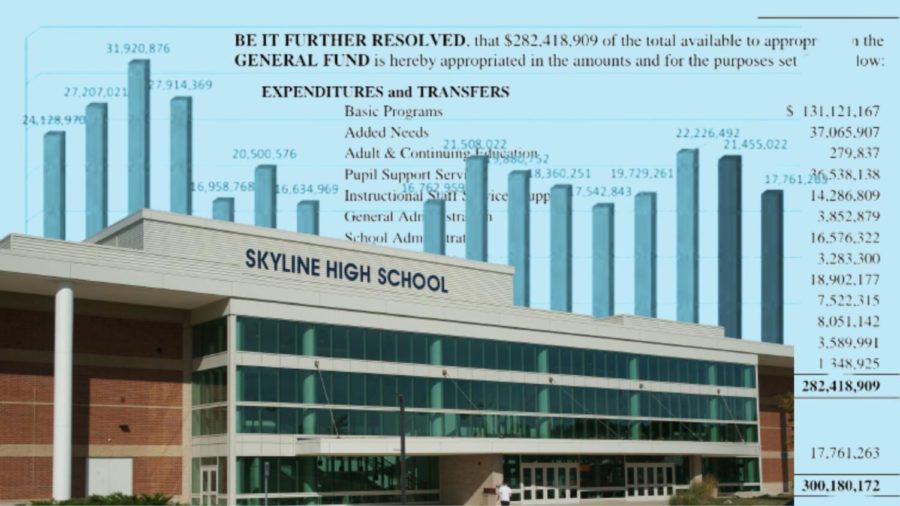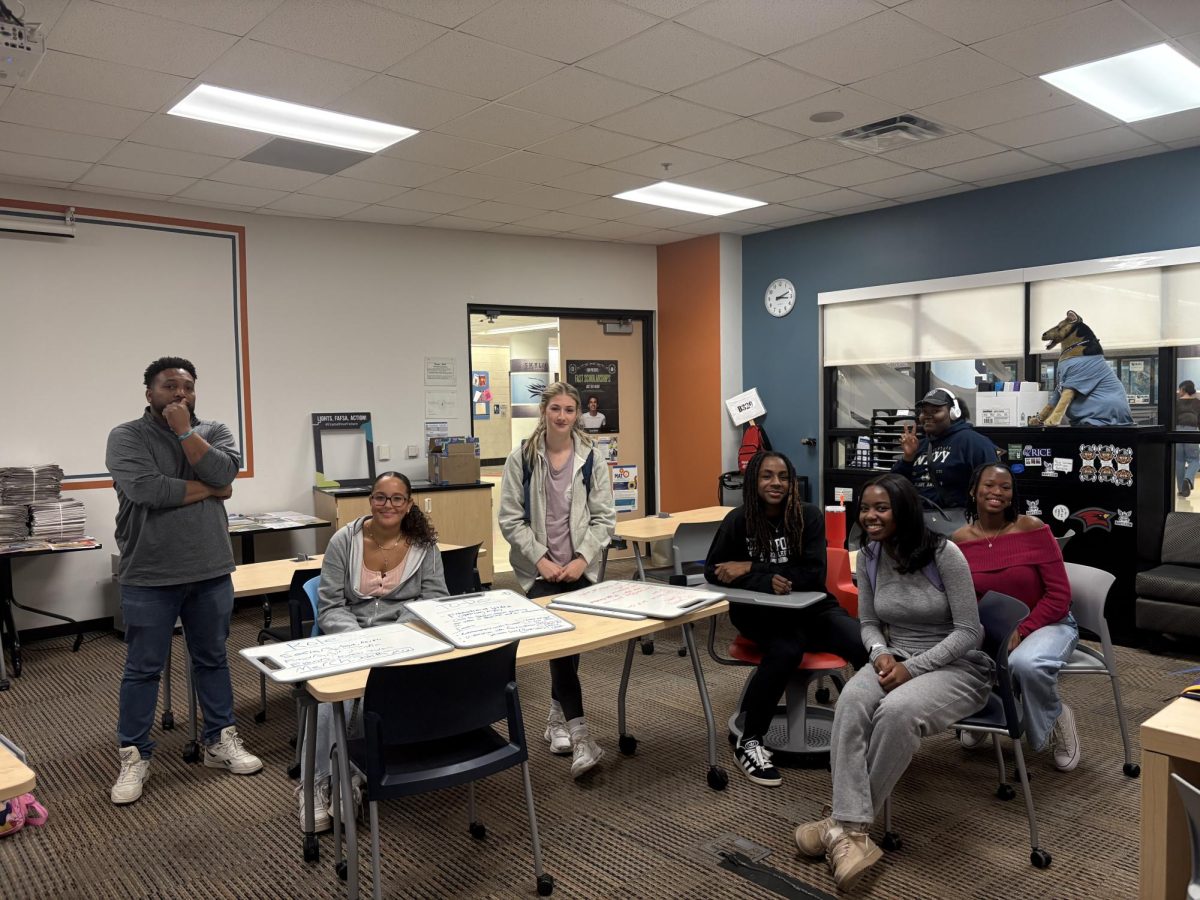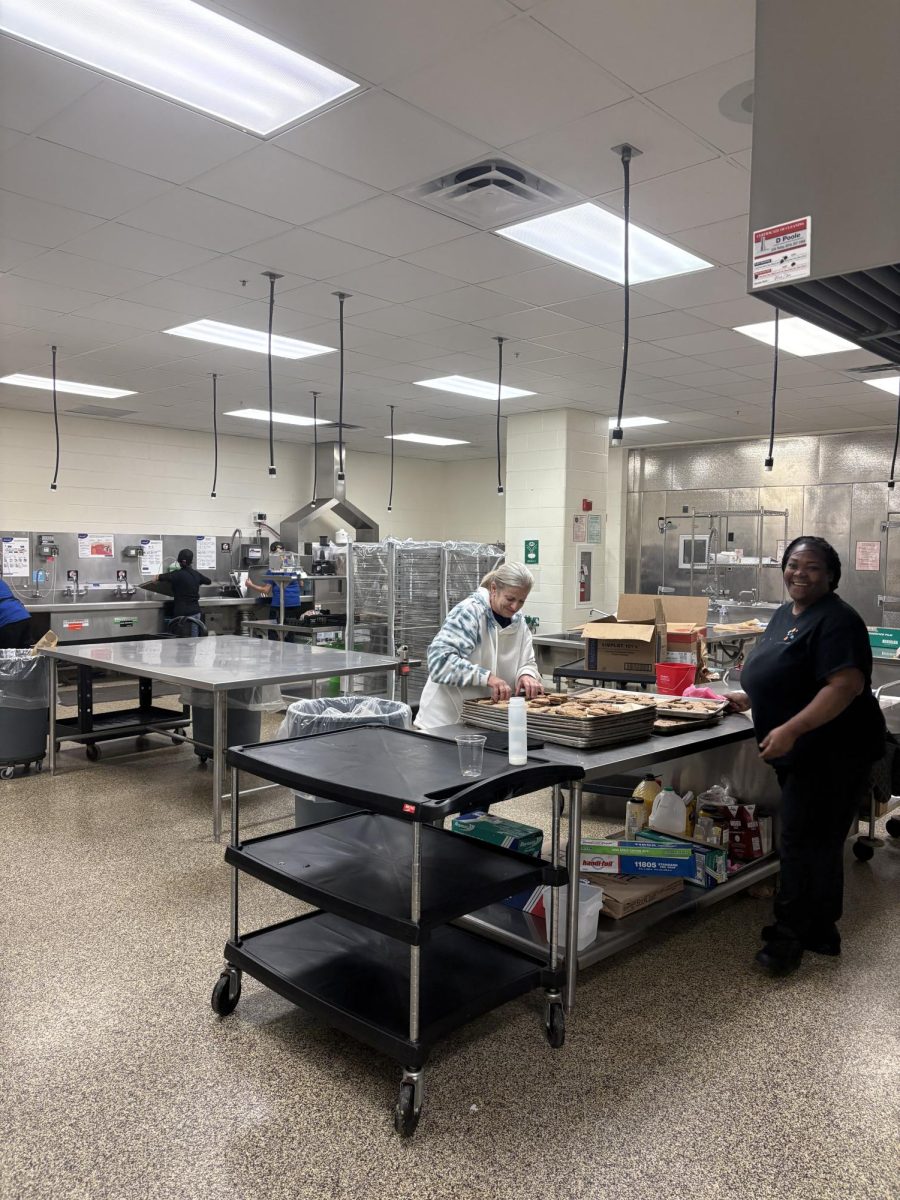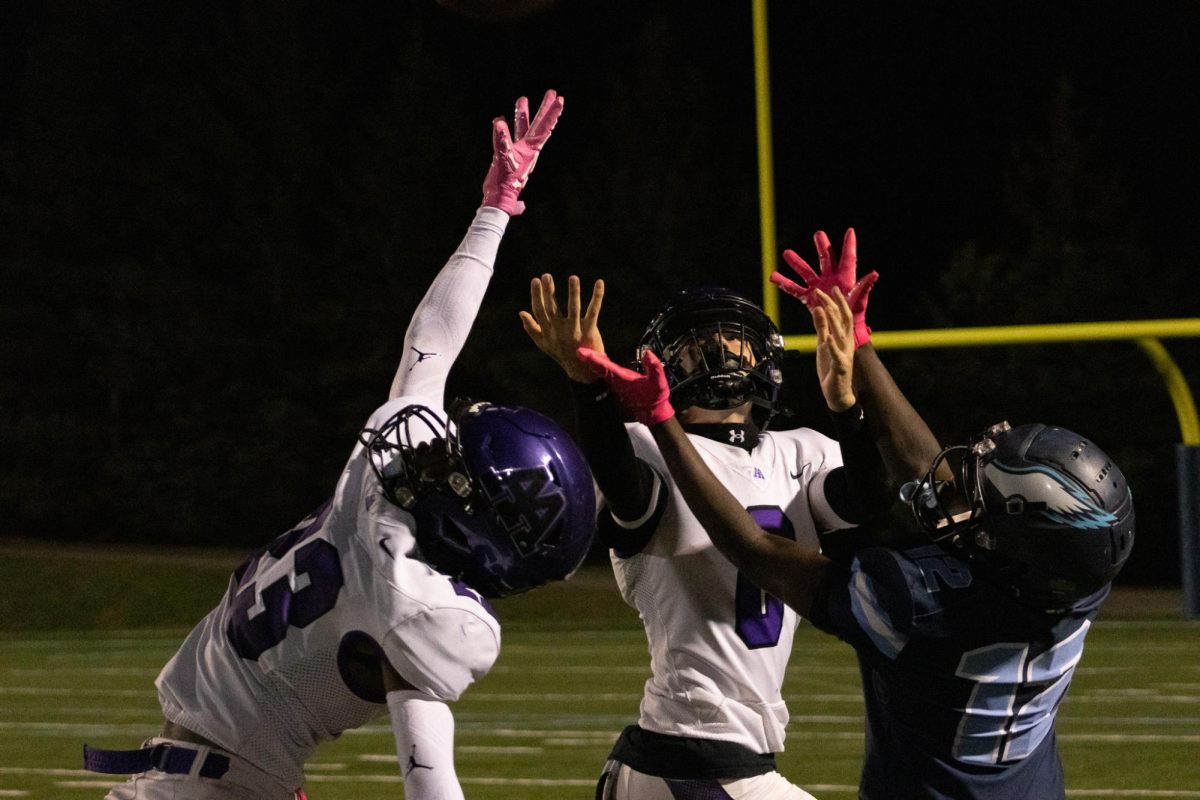What pays for the pizza in the cafeteria, the furniture lining the classrooms, and our Chromebooks? Must come from somewhere, right? And why is everyone fundraising all the time? The school budget is an enigmatic and frequently misunderstood system.
“Generally speaking, a school’s budget might be 80 – 87% staffing, because that’s what we mainly do — we teach, right?” says Cory McElmeel, Skyline’s principal. “The other parts are expendable funds and go into some of the facilities and things like that.”
According to Jolene Everard, Skyline’s finance office professional, a misconception about school budgets is that there is one budget for all expenses, when the truth is that schools have several different budgets. “There is payroll to fund staff, general fund that is used to purchase school supplies, and then there are voter approved bond funds,” says Everard. “Bond funds, which allow the school district to borrow funds, can only be spent on the items previously voted upon.” This can include new buildings, renovations, furniture, and technology.
“As the school principal, I get a budget.” said McElmeel. “That budget might be around a quarter of a million dollars. But then the majority of that budget is parceled out to other people. We have 12 department chairs [who] budget for wildly diverse departments — that would be your core ELA, math, social studies, science, but then fine arts, counseling, special education, world language, our magnet CTE… [etc.] We might spend […] on average any year, what, $8,000, on paper, maybe even $10,000, just on white copy paper for the building. So when you think, ‘a quarter of a million — that sounds like a lot,’ but $10,000 of that $250,000 could be just paper.”
All departments are given a portion of the general fund supply budget based somewhat on the size of the team and type of department. For example, a science or art department would receive a higher percentage of funds than ELA, as the materials needed for science (labs) and art are consumable and must be repurchased each year.
Clubs and after school activities do not get any money from the district or from the building, so their budgets are mostly from fundraising. “The after school [theater] program, which is self-funded, [has] a participation fee, much like athletics, and then students are asked to sell ads that we put on our program, to find sponsorships,” Anne-Marie Roberts, theater director says. “And then the last thing is ticket sales. So when you come to see the show, you pay per ticket.”
To aid with their budget, Skyline has a booster program, Skyline Friends of the Arts, that goes over all the Fine and Performing Arts, broken into separate divisions for different arts like theater, choir, band, etc. In addition, the art programs have done multiple fundraisers. “Choir does something every year called the Snap Raise fundraiser, kind of like a GoFundMe or a donation drive, but it’s organized and secure through an education organization,” said Lyn Ciechanski, VPAA co-lead and Skyline Choir director. “Sometimes we do small-scale fundraisers like a car wash or a bake sale, and things like that when we have small amounts that we need funds for.”
If clubs or departments have requested something specific, like help with transportation for a festival, the building will sometimes be able to help with some of those costs, but it is not necessarily available every year.
“Usually there’ll be seasonal [fundraisers]; like for choir, we did leaf raking in the fall. We do Christmas carols — that was fun. We [also] do a mattress fundraiser,” Choir and theater student, Claire Hurley (‘26) said. “There’s a lot of different things we do to help keep the arts going.”
Athletics works in a similar way — the athletics department is given a certain amount of money by the school and parcels it out. “It seems like it’s a very large budget compared to anybody else, but it’s really a small portion that we have to actually spend,” Laurie Adams, Skyline Athletic Department Secretary, said. “Most of it cover[s] salaries.”
“What we have tried always, around here, is a $500 budget for every sport, but we found that many didn’t need as much as some other teams did,” said Adams. “The athletic department helps as many [teams] as we can and then in the following year, we might say, ‘you know what, we helped you last year, now we’re going to help soccer [because] they need new nets’ or baseball needs some baseballs,” Adams said.
Something like football helmets — a really expensive item that the athletic department might not have enough in their budget left over to cover — might instead be suggested as a safety issue to the district. “It could vary each year. We try to help out as much as we can.”








